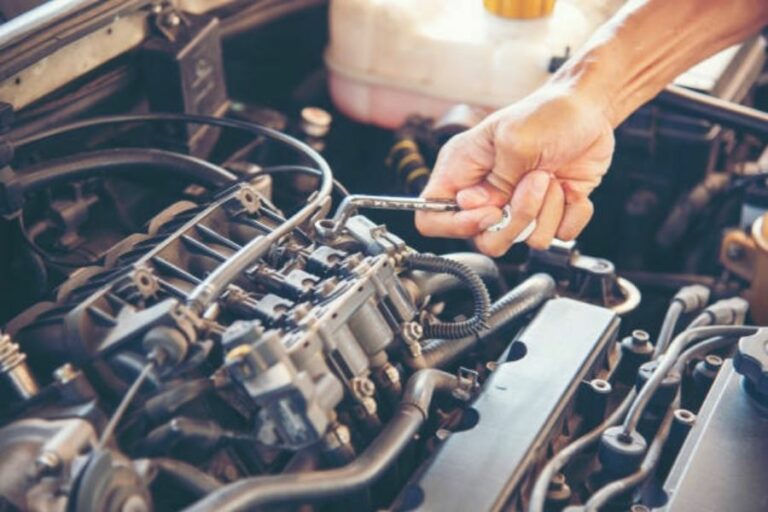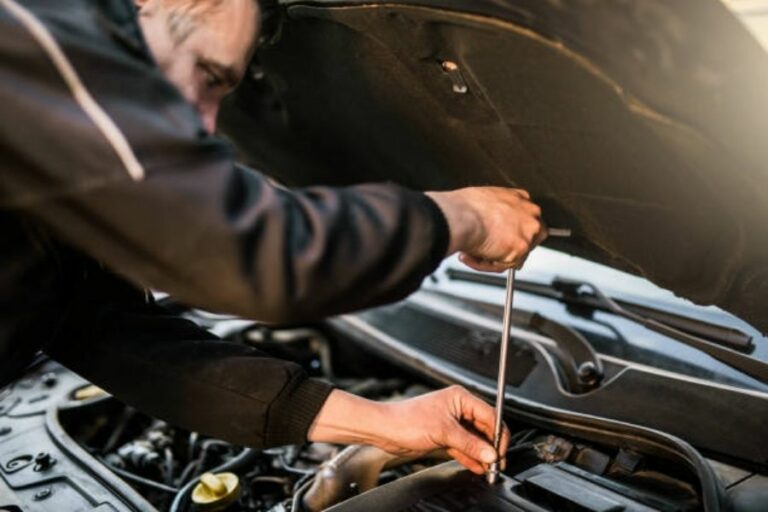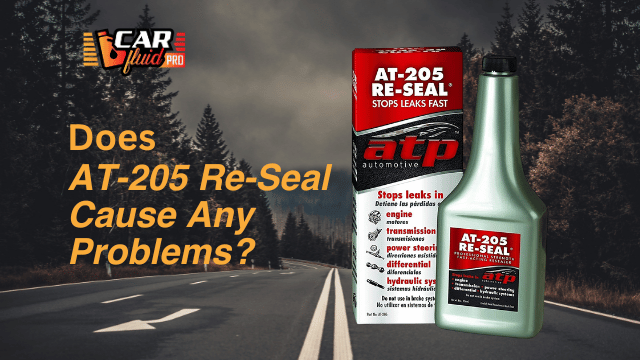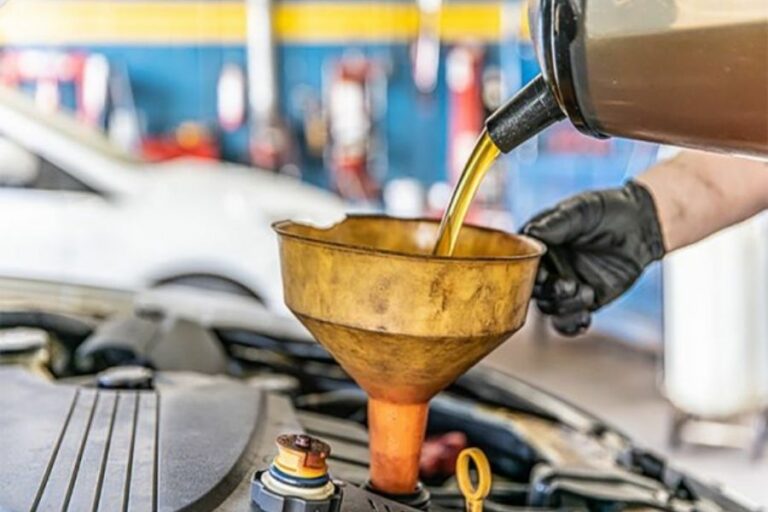How To Unstick Oil Pressure Relief Valve? [5 Easy Steps]
If your oil pressure relief valve is stuck, it is important to address the issue as soon as possible. A stuck oil pressure relief valve can cause various problems, including engine damage and reduced oil pressure.
To unstick an oil pressure relief valve, you first need to locate the valve and try to loosen the valve either manually or by penetrating oil. If it is still stuck, you must remove the valve and replace it if necessary.
However, you need more than these simple instructions to try and be a car mechanic! That’s why we wrote a full-on 5-step guide on how to unstick oil pressure relief valves. Read below to learn more!
Why Does My Oil Pressure Relief Valve Get Stuck?
![How To Unstick Oil Pressure Relief Valve? [5 Easy Steps]](https://carfluidpro.com/wp-content/uploads/Orange-Neon-Boxing-Match-Promotion-Youtube-Thumbnail-9.png)
Oil pressure relief valves are an important component of any internal combustion engine. They are designed to release excess oil pressure to protect the engine from damage caused by high oil pressure.
However, sometimes these valves can become stuck, leading to several problems. In this article, we’ll explore some common causes of stuck oil pressure relief valves and what you can do to fix the issue.
Debris or Contaminants
One of the most common causes of a stuck oil pressure relief valve is debris or contaminants in the oil. If the oil in your engine is dirty or contaminated, it can cause the valve to become stuck.
This is because the contaminants can build up on the valve seat and prevent it from opening and closing properly. To fix this issue, you’ll need to change the oil in your engine and ensure that you’re using a high-quality oil filter.
Wear And Tear
Another common cause of a stuck oil pressure relief valve is wear and tear. Over time, the valve can become worn and may not function as it should. This is especially true if you have an older engine or drive your vehicle in harsh conditions.
In this case, you’ll need to replace the valve to fix the problem.
No or Very Low amount of Lubricants
A lack of lubrication is a third possible cause of a stuck oil pressure relief valve. If the valve is not properly lubricated, it can become stuck. Various factors, including low oil levels or unsuitable oil for your engine, can cause this.
To fix this issue, you’ll need to ensure that you’re using the correct oil for your engine and that the oil is at the proper level.
Mechanical Issue
Finally, a stuck oil pressure relief valve can also be caused by a mechanical issue. This could be due to a problem with the valve itself or with other components in the engine. In this case, you’ll need to have the issue diagnosed by a mechanic and have the necessary repairs made.
Read Also: Why Oil Pressure Gauge Not Working – 15 Causes To Discuss?
5 Steps To Unstick Oil Pressure Relief Valve
To fix the problem, you’ll need to identify the cause and take the appropriate action, whether changing the oil, replacing the valve, or making repairs. Taking care of this issue can help protect your engine and ensure it continues running smoothly.
So, we developed some steps that do all of this for you even without you understanding it. If you follow the steps below, you can unstick your oil pressure relief valve without hassle.
Step 1: Locating The Oil PRV
Firstly, you need to locate your vehicle’s oil pressure relief valve. This valve is typically located on the side of the engine block or the oil pump.
To locate the oil pressure relief valve, you’ll need to refer to your vehicle’s service manual or consult a mechanic. If you’re comfortable working on your vehicle, you can try to locate the oil pressure relief valve yourself by following these steps:
- Locate the oil filter. The oil pressure relief valve is usually located near the oil filter.
- Follow the oil pressure line. The oil pressure relief valve is usually connected to the oil pressure line. So, the oil pressure line can guide you to the oil pressure relief valve!
- Look for a spring-loaded valve. The oil pressure relief valve is typically a spring-loaded valve designed to release excess oil pressure.
- Consult your vehicle’s service manual. If you’re having trouble finding the oil pressure relief valve, your vehicle’s service manual should have a diagram showing its location.
It’s important to note that the location of the oil pressure relief valve can vary depending on the make and model of your vehicle.
Step 2: Cleaning Around The Valve
Debris or contaminants can cause the oil PRV to get stuck. So, when you can locate the valve, use a cloth or brush to remove any dirt, debris, or oil blocking the valve firsthand! This alone may unstick your oil pressure relief valve.
Step 3: Loosen The Valve
First, try to loosen the valve manually. Use a wrench or pliers to loosen the valve gently. If it is stuck, apply a little bit of penetrating oil to the valve and let it sit for a few minutes to loosen any rust or corrosion that may be causing the valve to stick.
Step 4: Applying Pressure
If you can not loosen the valve using pliers, tap the valve lightly with a hammer. Use a soft, non-marring hammer to avoid damaging the valve. This may help to loosen any debris or rust causing the valve to stick.
Then, try to loosen the valve again using a wrench or pliers. If the valve is still stuck, you may need to use a stronger tool, such as a pipe wrench or a vice grip, to apply more force.
Step 5: Remove The Valve Using A Puller
If the valve is still stuck, you need to remove the valve from the engine using a puller tool. First, remember to drain the oil. Draining oil will ensure you don’t make a mess while working on the oil PRV.
Then, use a puller tool to remove it from the engine. You can apply penetrating oil and a wire brush to remove rust or debris and reattach the valve to the engine if it seems good enough. However, we recommend replacing old or rusty parts for better performance.
If the removal and replacement process seems complicated, follow this video from Junior Classic VW Bugs.
Read Also: Pressure Coming Out of Oil Filler Cap (Solved)
FAQs
Automobile problems can show the same symptoms for different malfunctions. That’s why it can be difficult for car owners to understand why their vehicle is acting weird.
In this section, we answered some commonly asked questions on this topic. If you have any questions, check this section first!
Can a jammed oil pressure relief valve harm the engine?
Yes. A jammed oil pressure relief valve can cause harm to the engine if not addressed. If the valve is stuck in the closed position, it can cause the oil pressure to build up and potentially damage the engine. On the other hand, if the valve is stuck in the open position, it can cause the oil pressure to drop too low, leading to insufficient lubrication and potential engine damage.
Can a stuck oil pressure relief valve be fixed without replacing it?
Sometimes, you can fix a stuck oil pressure relief valve without replacement. For example, if the valve is stuck due to debris or contaminants in the oil, simply changing the oil and using a high-quality oil filter may fix the problem.
Can I drive my vehicle with a stuck oil pressure relief valve?
It is not recommended to drive your vehicle with a stuck oil pressure relief valve. If the valve is stuck in the closed position, it can cause the oil pressure to build up, potentially leading to engine damage. If the valve gets stuck in an open position, it will cause low oil pressure in the engine and possibly damage the engine. It’s best to address the issue as soon as possible to prevent further damage to the engine.
Can a stuck oil pressure relief valve cause my oil light to come on?
Yes. A stuck oil pressure relief valve can cause the oil light to come on. If the valve is stuck in the closed position, it can cause the oil pressure to build up, triggering the oil light to come on as a warning sign. Also, if the valve is stuck in the open position, it can cause the oil pressure to drop too low, triggering the oil light to come on.
Conclusion
Try to change your engine oil regularly and inspect the oil pressure relief valve at least once every six months. This will ensure that your oil PRV works properly for a long time!
If you cannot unstick the oil pressure relief valve on your own, we recommend you seek the assistance of a mechanic.
A stuck oil pressure relief valve can be a serious issue, and it is important to address it as soon as possible to avoid further damage to your engine.






